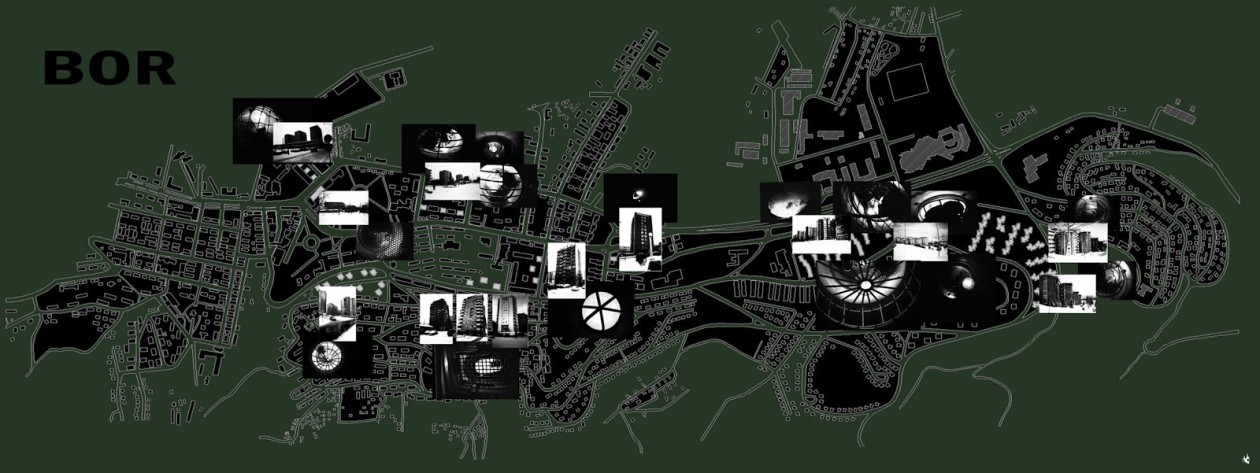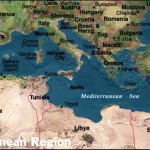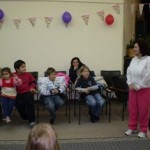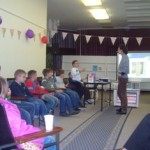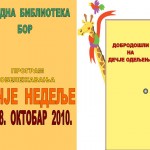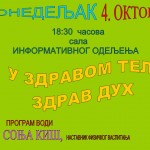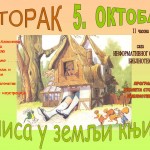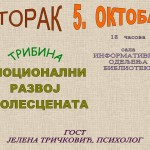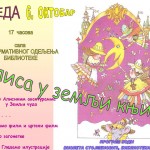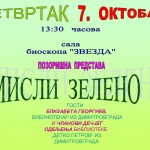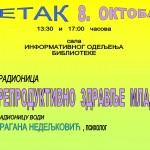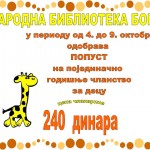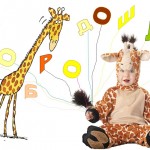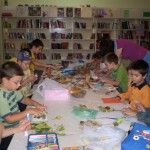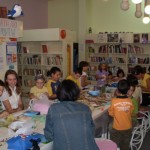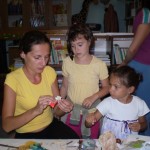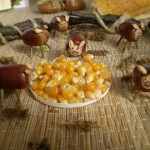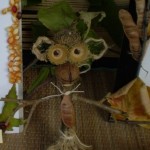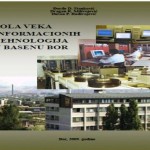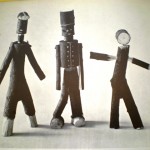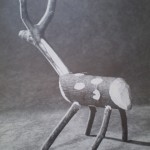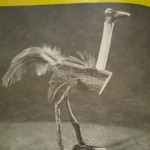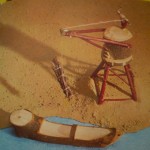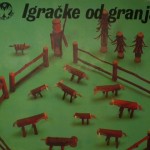Amarcord
Стручни семинар у Народној библиотеци Бор
Подружница библиотекара Тимочке Крајине
Народна библиотека Бор
Поштованe колегe,
обавештавамо вас да ће се у Народној библиотеци Бор одржати стручни семинар
21. октобра 2010. године са почетком у 12,00 сати.
Тема едукативног семинара је одабрана на основу раније утврђених потреба:
ЗНАЧАЈ ЗАВИЧАЈНИХ ЗБИРКИ У ОПШТИНСКИМ БИБЛИОТЕКАМА
У оквиру насловне теме планирамо три предавања:
- Основне смернице за формирање завичајних збирки у општинским библиотекама / Др Дејан Вукићевић, Народна библиотека Србије
- Класификација, инвентарисање и обрада некњижне грађе / Јелене Глишовић, библиотекар одељења посебних фондова Народне библиотеке Србије
- Организација рада завичајног одељења и заштита завичајне грађе / Емилија Димовска, библиотекар саветник, Народна библиотека «Стефан Првовенчани» Краљево
Пожељно је да семинару присуствују осим библиотекара и директори библиотека, као и сви други заинтерсовани за рад завичајних одељења. Надамо се да ћемо уз вашу подршку и активно учешће реализовати семинар који може допринети успеху у нашем даљем раду.
С поштовањем,
Организациони одбор семинара:
Весна Тешовић, директор Народне библиотеке Бор
Драгица Радетић, библиотекар матичне службе НБ Бор
Драган Стојменовић, библиотекар завичајног одељења НБ Бор
Боривоје Ђорђевић, библиотекар матичне службе НБ Зајечар
Др Дејан Вукићевић
Народна библиотека Србије
dejan.vukicevic@nb.rs
ОСНОВНЕ СМЕРНИЦЕ ЗА ФОРМИРАЊЕ ЗАВИЧАЈНИХ ЗБИРКИ
У ОПШТИНСКИМ БИБЛИОТЕКАМА
Основне смернице за формирање и вођење завичајних фондова су направљене на основу ауторове докторске дисертације и искуства из вишегодишњег обављања стручног надзора завичајних фондова на територији централне Србије. Стога је приступ у њима субјективан и треба га схватити само као предлог који би требало да олакша рад библиотечких радника на завичајним фондовима.
Емилија Димовска, библиотекар саветник
Народна библиотека «Стефан Првовенчани» Краљево
ОРГАНИЗАЦИЈА РАДА ЗАВИЧАЈНОГ ОДЕЉЕЊА И ЗАШТИТА ЗАВИЧАЈНЕ ГРАЂЕ
Циљ предавања је да се првенствено бави специфичношћу завичајног одељења која се огледа у раду са различитим типовима и врстама грађе. Држаћемо се оне поделе грађе на књижну, некњижну и периодику, с нагласком на некњижној грађи као најзахтевнијој у погледу смештаја и обраде. Биће показана и нека практична решења као што је инвентарна књига за различите врсте грађе, фасцикла по мери плаката, прес клипинг разврстан по предметној одредници и др.
Архивирање дигиталне, односно електронске грађе као вида некњижне грађе која расте великом брзином јер нам омогућава да имамо оно што немамо, односно да имамо дигиталну верзију докумената које немамо у аналогном облику и стварамо сопствену базу која сада расте у складу са нашом ажурношћу, није нешто чему нас подучавају, на ту тему не размењујемо искуства, а претраживост и потоња обрада ове грађе увелико зависе од ваљаности архиве.
Специфичност завичајних одељења је и праћење рада саме библиотеке, од службених имејлова до фотографија. То је такође праћење рада самих библиотекара. Као што нису спорне изложбе у холовима библиотека, исто тако електронске презентације, slide show направљен као визуелно покриће неког програма је ауторско дело. Као нус производ оваквих активности јавља се гомила скенираног материјала чију употребну вредност треба проверити, разврстати, обрадити, чувати, односно архивирати.
Сарадња завичајног одељења са другим институцијама културе у граду биће приказана хипотетички, на примеру који подразумева online приступ грађи и не зависи само од библиотекара.
Јелена Глишовић
Народна библиотека Србије
jelena.glisovic@nb.rs
ОБРАДА И ИНВЕНТАРИСАЊЕ НЕКЊИЖНЕ ГРАЂЕ
Предстојеће излагање биће упознавање са општим начелима класификације, обраде и инвентарисања некњижне грађе. Обухватиће преглед некњижне грађе, по врстама, а потом и међународних стандарда који се примењују у њеној обради ISBD(NBM) – Међународни стандардни библиографски опис некњижне грађе, као стандард који се односи на највише врста некњижне грађе биће посебно представљен, а преостала три стандарда – ISBD(ER), ISBD(CM) i ISBD(PM) у кратком прегледу према њиховим специфичностима у односу на врсту грађе којој су посвећени.
Потом ће бити речи о пословима инвентарисања и принципима које следимо у зависности од врсте некњижне грађе коју обрађујемо.
Нова радионица на Дечијем одељењу
29. 10. Дечије одељење Народне библиотеке Бор организује креативну радионицу за своје кориснике.
Потребан материјал: картон, украсне траке, online casino маказе и лепак.
Радионица ће се одржати у два термина: од 10 до 12 и од 16 до 18 сати.
Дечија недеља у Народној библиотеци Бор
Дечја недеља (од 4. до 8. октобра) облежена је у НБ Бор разноликим активностима, којима је присуствовало или у њима учествовало више од 1000 деце. Шаролик целонедељни програм окупио је децу од 6 до 16 година. Играонице, радионице, трибине, филмски програми и позоришна представа чинили су главни део програма. Гости Дечјег одељења били су малишани из свих основних школа на територији града, ученици борске гимназије, као и деца из засеока Шарбановац-Тимок, која су од Народне библиотеке Бор добила и поклон – књиге за своју школску библиотеку.
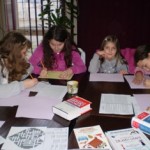
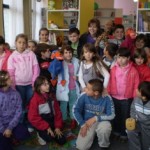
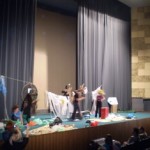
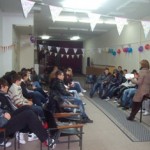
И библиотечки огранци у Бољевцу и Злоту приредили су својим корисницима програм – „Игре без граница“. Ученици из школа из Злота, Бољевца и Доње Беле Реке такмичили су се у неколико спортских дисциплина, а најбољи такмичари награђени су и књигама.
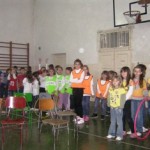
Програм обележавања Дечије недеље у Народној библиотеци Бор
Септембарска радионица за децу
Септембарску креативну радионицу Дечјег одељења посетило је тридесетак малишана и њихових родитеља. Користећи дрво, лишће, семење и зрневље, наши чланови показали су своју маштовитост и уз помоћ родитеља направили занимљиве радове који чине септембарску изложбу.
Радови су изложени на Информативном одељењу библиотеке.
Пола века ИТ у басену
Креативна радионица
Креативна радионица за децу, чланове Дечјег одељења библиотеке одржаће се 17. септембра од 10:00 до 12:00 часова и од 16:00 до 18:00 часова . Потребан материјал за септембарску радионицу је : гранчице, лишће, семење, канап, лепак.
Жарка вас позива на дружење и подсећа да је септембарски попуст за упис у библиотеку 8. септембра.
Добродошли на Дечје одељење.
Google group: Narodna biblioteka Bor
Са жељом да успостави ближи контакт са својим корисницима, као и да им понуди могућност да упит везан за литературу и изворе на било коју тему поставе он-лајн, те да одговор добију како од библиотекара, тако и од других корисника са сличним интересовањима или потребама, Народна библиотека Бор креирала је групу.
У оквиру ове групе, сви корисници тј. чланови Народне библиотеке Бор могу да наведу тему којом се тренутно баве. Библиотекари ће им поставити списак литературе коју на ту тему библиотека поседује – а који, касније, може бити од користи и неком другом – као и линкове ка корисним и провереним сајтовима на мрежи. Корисници такође могу да наруче скенирање, међубиблиотечку позајмицу и сл, а да при том не морају да долазе у библиотеку. У оквиру групе ће моћи да сазнају да ли неки други корисник поседује књигу која им треба, или можда зна која би литература била корисна, и сл. Моћи ће да коментаришу и препоручују књиге које су читали, интересантне сајтове или да сазнају шта други читају. Моћи ће и да коментаришу квалитет услуга библиотеке, да дају предлоге везане за набавку, програме или услуге, као и да траже било коју врсту информације до које сами нису могли да дођу.
С обзиром на то да је учешће у групи карактеристично за особе које иначе много времена проводе на Интернету, па у библиотеку долазе тек онда када не успеју да сами на Интернету пронађу одговарајуће податке и информације, прво питање које члановима нудимо за дискусију и јесте везано за поступке проналажења он-лајн извора и начине њиховог вредновања.
ПРИДРУЖИТЕ НАМ СЕ!
Поред тога, сви чланови Народне библиотеке Бор могу се пријавити на мејлинг листу. На адресу narodna.biblioteka.bor@gmail.com пошаљите писмо у којем ћете навести које Вас области, теме, жанрови превасходно интересују, а ми ћемо Вам слати спискове нових наслова из тих области чим стигну у библиотеку.
